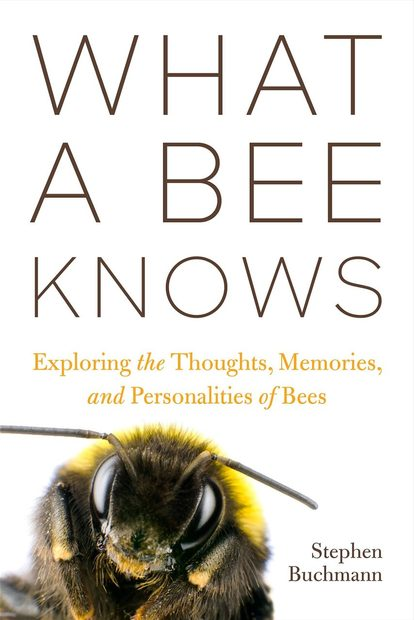Book review: What a Bee Knows. Some amazing facts
At adaptive-emergent, we are looking for simple behaviours in nature that add up to quite complex ones. The resulting model can be used to massively scale basic business rules into a whole that is more than the sum of its parts.
However if you want to apply this by studying bees and beehives, think again. These creatures are already complex.
What a Bee Knows: Exploring the Lives of the World's Hardest-Working Creatures (2023) by Stephen Buchmann is a fascinating exploration of the lives of bees, filled with remarkable insights into their behaviour, biology, and importance to ecosystems. Note the audiobook is narrated by the author, and he has a great, soothing voice for the task.
Here are some of the most amazing facts about bees from the book:
1. Bees Are Ancient Creatures
Bees are incredibly old creatures, with fossils showing that they have existed for around 100 million years. They have co-evolved with flowering plants, and their role in pollination has shaped the way modern ecosystems function.
The earliest bees appeared around the time of the dinosaurs. Some scientists speculate that bees evolved from wasp-like ancestors during the Cretaceous period, adapting to a plant-pollination niche as flowering plants became more common.
2. Bees Have Advanced Navigation Skills
Bees can navigate with incredible precision, using landmarks, the sun, and even the Earth’s magnetic field to find their way. They also have an impressive memory for floral patterns and can recall the locations of specific flowers they’ve visited, sometimes navigating several kms back to them. This can from 1 to 3 kms, but reports up to 11kms have been noted (Ecology journal, 1993).
3. Incredible Pollination Abilities
Bees are responsible for pollinating about one-third of the world’s food crops, including fruits, vegetables, nuts, and seeds. Their ability to pollinate plants efficiently is crucial to global food production and biodiversity.
Bees and flowers have a mutually beneficial relationship. Flowers rely on bees for pollination, while bees collect nectar and pollen for food. Some plants have evolved specialised traits that attract specific bee species, which have adapted to these plants’ unique structures.
4. Bees Have an Extraordinary Sense of Smell
Bees have a highly developed sense of smell, which allows them to detect pheromones (chemical signals) from other bees. This is key for regulating hive activities such as reproduction, defence, and foraging.
They can also differentiate between hundreds of flower scents, which helps them identify the most nectar-rich flowers. Their olfactory capabilities are so advanced that they can even distinguish slight variations in scent patterns, such as those caused by environmental factors or changes in the flowers' health.
--> And now we get into the parts of interest to our company, building distributed networks based on nature:
5. Bees Have Complex Social Structures
A bee colony functions as a superorganism with highly specialised roles. Worker bees, drones, and the queen each have distinct duties. Worker bees gather food, maintain the hive, and care for the brood. Drones are male bees whose primary job is to mate with the queen, and the queen’s role is solely to reproduce.
But it goes beyond that: the queen doesn't just lay eggs, she releases pheromones to regulate the activities in the hive and keep the peace. The worker bees feed the larvae, clean the hive, make the hive, and go foraging. Drones mate with the queen, guard the hive, and maintain the proper ambient temperature by going to the entrance to the hive and fanning their wings for airflow!
Workers and drones will defend the hive to the death.
6. Bees Are Capable of Complex Communication
When a bee finds a good source of nectar, it returns to the hive and performs a "waggle dance" on the hive’s surface. This dance encodes information about the distance and direction of the food source relative to the sun’s position. The speed and angle of the dance convey precise information to other foragers in the colony.
When the colony is under threat, bees can release alarm pheromones that trigger a defensive response from the hive. This triggers other bees to become more aggressive and defend the colony, sometimes stinging invaders or predators.
Check out David Attenborough at around 2:30 of this video, where giant honey bees in Malaysia for a collective shield against their arch enemy the hornet making it difficult for the aggressor to land.
The book moves onto facts that go above and beyond what most people know about bees.
7. Bees Can Learn and Solve Problems
Bees are capable of complex learning and problem-solving. Studies have shown that bees can learn from experience, make decisions, and even understand abstract concepts like shape, colour, and size.
There is evidence that bees are capable of using tools. For example, some species of honeybees can use sticks or other objects to "fish" for nectar, and they have been observed using wax to build structures with remarkable precision.
8. Bees Can Feel and React to Emotional States
Studies suggest that bees may be capable of experiencing simple emotions or emotional states. For instance, they can become stressed by changes in their environment, and some experiments have shown that they can exhibit "anticipatory behaviour" when they expect a reward, such as nectar.
Bees have nociceptors (pain receptors), and experiments have shown that they react to harmful stimuli in ways that suggest they may experience pain. This raises interesting questions about the ethical treatment of bees and other insects in research.
And finally, the 'holy cow' moment:
9. Bees Can Learn to Recognise Faces
In one of the more surprising findings, studies have shown that honeybees can recognise human faces. Bees can be trained to distinguish faces from other objects, suggesting that their brains are capable of processing complex visual information, similar to the way humans and some other animals recognise faces.
Nature continues to surprise and astonish.



Comments
Post a Comment